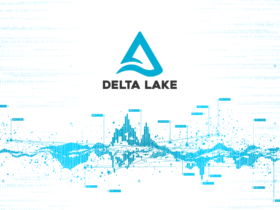Operationalizing AI for businesses seems to be the hottest trend in technology today, but most people don’t know what operationalizing AI means. It’s basically the process of applying AI to your business and using it in a way that gives you real results.
The goal is not just to have a cool piece of technology that no one understands but instead to use it in such a way that it will help your company grow. The process of operationalizing AI involves making the technology available to businesses.
It’s not just about creating an algorithm that can identify people in photos or even generating new music based on what you like; it’s about making sure that AI is accessible to everyone.
Let’s dive deep into the concept of Operationalizing AI in every sector.
What is Operationalizing AI?
Operationalizing artificial intelligence is referred to as governing and managing AI and decision models throughout their entire lifecycle.
These techniques include machine learning (ML), knowledge graphs, rules, optimizations, and natural language processing.
In order to operationalize artificial intelligence (AI), a company first deploys small experiments in the real world (solving real business problems), then applies what it has learned to similar challenges or problems.
The organization can apply learnings to other use cases as a use cases scale, which allows the organization to apply the learnings across use cases.
In order to get AI systems into production, practitioners must operationalize AI.
As soon as AI systems get released to production or live environments, they are “operationalized.”
AI Adoption: Current View and Challenges
Business organizations are increasingly adopting AI due to its many potential applications. While many companies are still in the early stages of their digital transformations and data strategies, many still have a long way to go.
There is a general belief that deployment should take less time than building a model. AI now faces one of the greatest challenges in the industry.
Modeling is one thing, but operationalizing AI is even more challenging.
Operationalizing AI involves significant challenges , including
Data Quality:
According to Gartner, 85 percent of AI projects will produce erroneous results by 2022 due to biases in data, algorithms, or management teams.
Testing and validation occur in controlled environments, where high-quality data gets used. Whereas real-world data is usually low quality, resulting in low model accuracy when deployed in production.
Managing the Compute power:
The amount of computing power required depends greatly on the type of model getting developed.
The computing power required for deep learning or computer vision models is high for training data sets but can get reduced to 1/nth in production.
KNN models, on the other hand, require high processing power in production.
In order to successfully operationalize AI in organizations, each stage of analytical modeling needs to be optimized for compute power.
Data Ownership.
Most data science personnel prefer to work with local data sets on their personal computers. However, this doesn’t work well in an operational setting. It leads to significant inefficiencies and duplicated data due to data stored within these organizations.
It is true that there is no perfect platform for bridging this data storage, but some seek to find one.
In place of AI model development and training, we should focus on optimizing processes and procedures that address the transitions between the two phases of AI model development and training along with the two phases of AI model operationalization.
The key to successful AI and ML projects is understanding and planning for all the complexity involved.
Balancing Time-to-Market.
It is important to recognize that technical stakeholders are still responsible for some issues after AI tools and practices are in place.
Many factors must be considered, such as trust, bias, security, privacy, fairness, and model drift.
In an ideal world, artificial intelligence can solve problems and refine solutions in an unlimited amount of time. These tasks have to get replaced with budgets, schedules, reviews, and audits.
A metric that places all of these points into perspective is time-to-market. For technical stakeholders, time-to-market metrics are crucial for guiding their teams.
Unique Platforms and Processes
Platforms and processes that are unique to AI work are often required. Various new terms and techniques are getting introduced in integrated development environments (IDE) tools that are becoming more and more important than debugging code: sampling, cross-validation, entropy, learning rate, vanishing gradients, etc.
Software development processes differ from AI development processes in terms of priorities, concerns, and evaluation methods. Many of the discussions in the industry around MLOps originate in this context. In addition, AI tools are also continuously evolving and changing.
Tips to overcome the AI challenges
- Ensure that the vendor has the relevant portfolio and expertise in AI.
- Assess which processes and IT systems could get improved by AI with the help of a skilled business analyst.
- Make sure you consider ethical issues before using AI to its full potential.
- Implement AI projects in a systematic and comprehensive way, taking into consideration solution development, integration, scaling, and employee onboarding.
- Build your system with your vendor while sharing knowledge continuously.
- A lot of data is required to make AI solutions capable of replacing or enhancing critical tasks overnight.
- Make AI algorithms more accurate by hiring subject matter experts.
- Inform your employees about the benefits of data-driven decision-making and how artificial intelligence can enhance their productivity
Conclusion
With artificial intelligence, organizations getting transformed how they function and perform processes with machines.
Even though it has progressed significantly in the past decade, there are still many challenges that need to get overcome before it gets fully operationalized at scale for various use cases.
Despite this, AI has opened up exciting possibilities that would be impossible or cost-inefficient before, and it will continue to do so in the next decade.
As long as the focus isn’t just on automation for automation’s sake, we should see steady progress towards increased adoption and evolution of AI over time.








